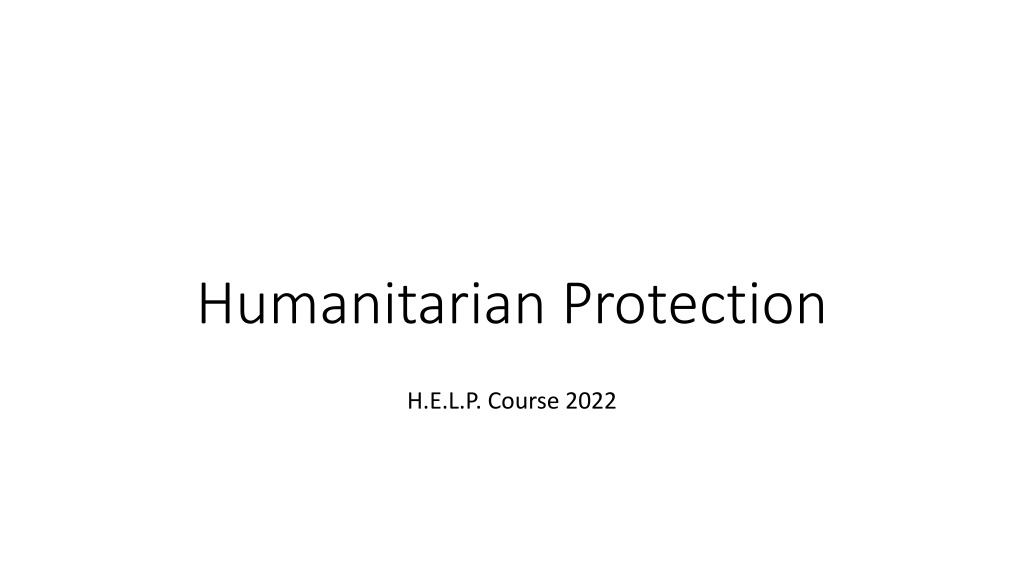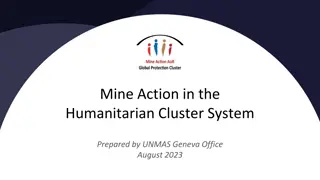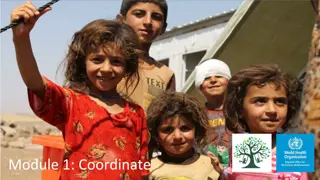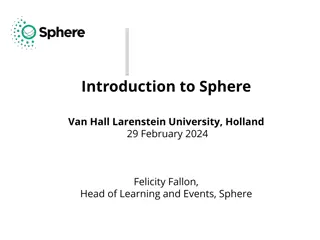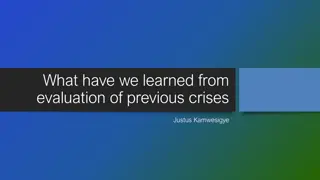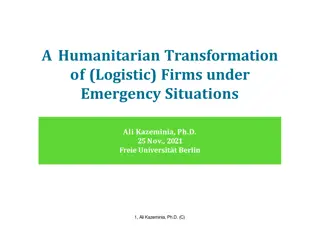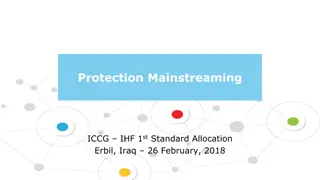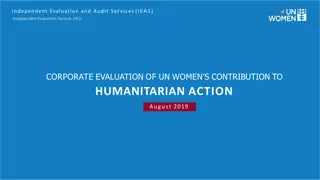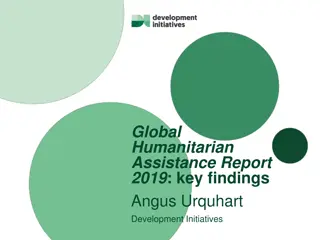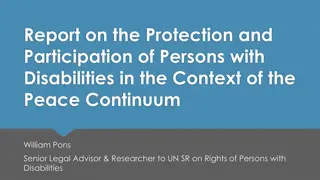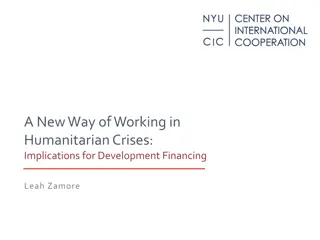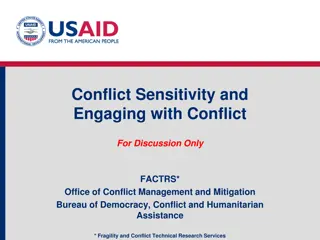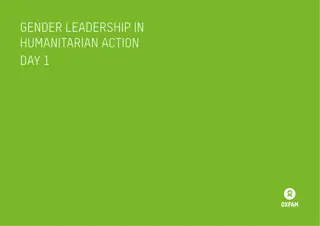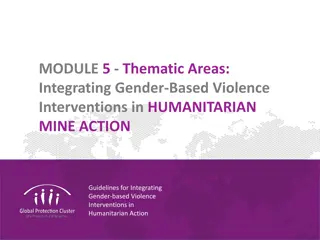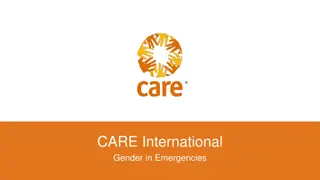Understanding Humanitarian Protection and Addressing Needs in Conflict Situations
Explore the concept of protection in conflict situations, identify risks faced by individuals, and learn ways to address protection needs through examples and case studies. Understand the intertwining of protection and health interventions in humanitarian work.
Download Presentation

Please find below an Image/Link to download the presentation.
The content on the website is provided AS IS for your information and personal use only. It may not be sold, licensed, or shared on other websites without obtaining consent from the author. Download presentation by click this link. If you encounter any issues during the download, it is possible that the publisher has removed the file from their server.
E N D
Presentation Transcript
Humanitarian Protection H.E.L.P. Course 2022
Objectives Learners are able to explain the concept of protection and identify some of the main protection concerns of people affected by conflict and other situations of violence identify ways to address protection needs describe ways in which protection and health interventions are intertwined H.E.L.P. course
What is Protection? Activities to ensure the respect for the rights of individuals in accordance with the relevant bodies of law (international humanitarian law, human rights law, refugee law ) Reduction of risks, also by decreasing the vulnerability of persons and the strenghthening of their capacities
Case study Rebel forces gained a large part of the territory and ruled it with a brutal regime for more than 10 years. Recently, through a vicious war that entailed enormous harm to both sides, the government managed to retake the land. Many people, supposedly supporters of the rebel regime, are in the custody of the government and depend on them to cover all their basic needs (housing, food, health, education, ...). The men of fighting age are deprived of their liberty with no possibility to contact their families. The others, mainly women and children, are in IDP camps in a dire situation and prevented by the Government, for security reasons, to return to their communities of origin. Even if they were free to do so, they could not return, as the communities would never accept the women, perceived as collaborators, nor the children of the rebel . H.E.L.P. course
Group work 1. What protection concerns and risks do you think people face in this situation? 2. Define as many actions as possible to address them
Addressing protection needs Addressing protection needs H.E.L.P. course
Examples of protection interventions Int. standards into national legislation Public campaigns on needs Support/creating systems to facilitate family contact Access to support for victims/survivors Environment Environment Building Building Awareness raising in communities of origin Remedial Remedial Action Action Public reports (others) Responsive Action Action Mobilization other actors Responsive Judicial guarantees Violation Abuse Violation Abuse Clarify fate of missing persons and support families Confidential dialogue H.E.L.P. course Strengthening resilience of people at risk
Which role would you play in the protection of people Which role would you play in the protection of people and and how do you see protection work contributing to how do you see protection work contributing to Health? Health? H.E.L.P. course
ICRC Protection Material ICRC Protection Material
